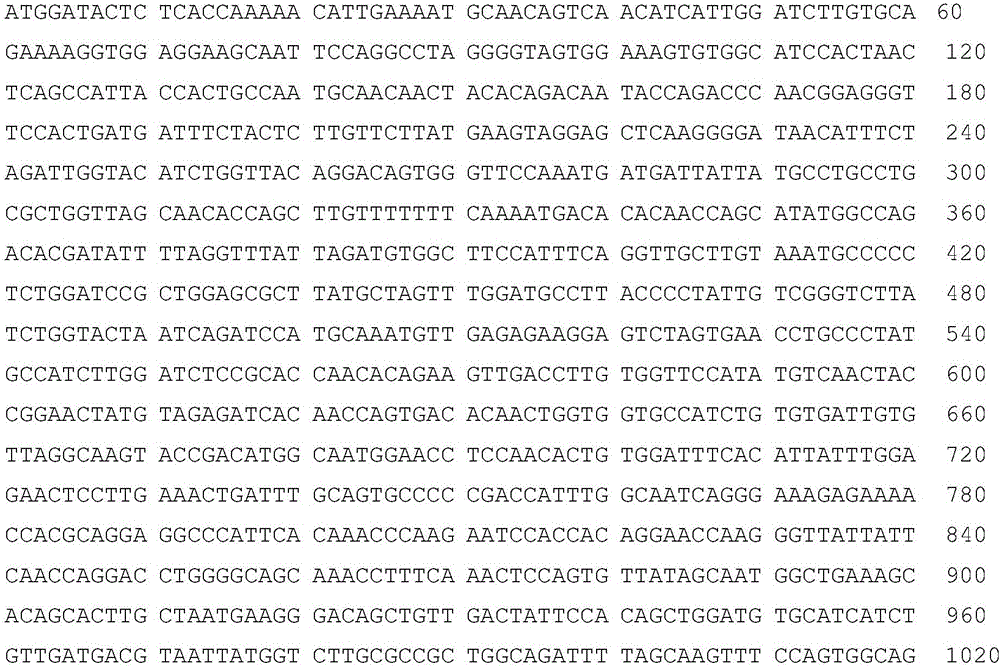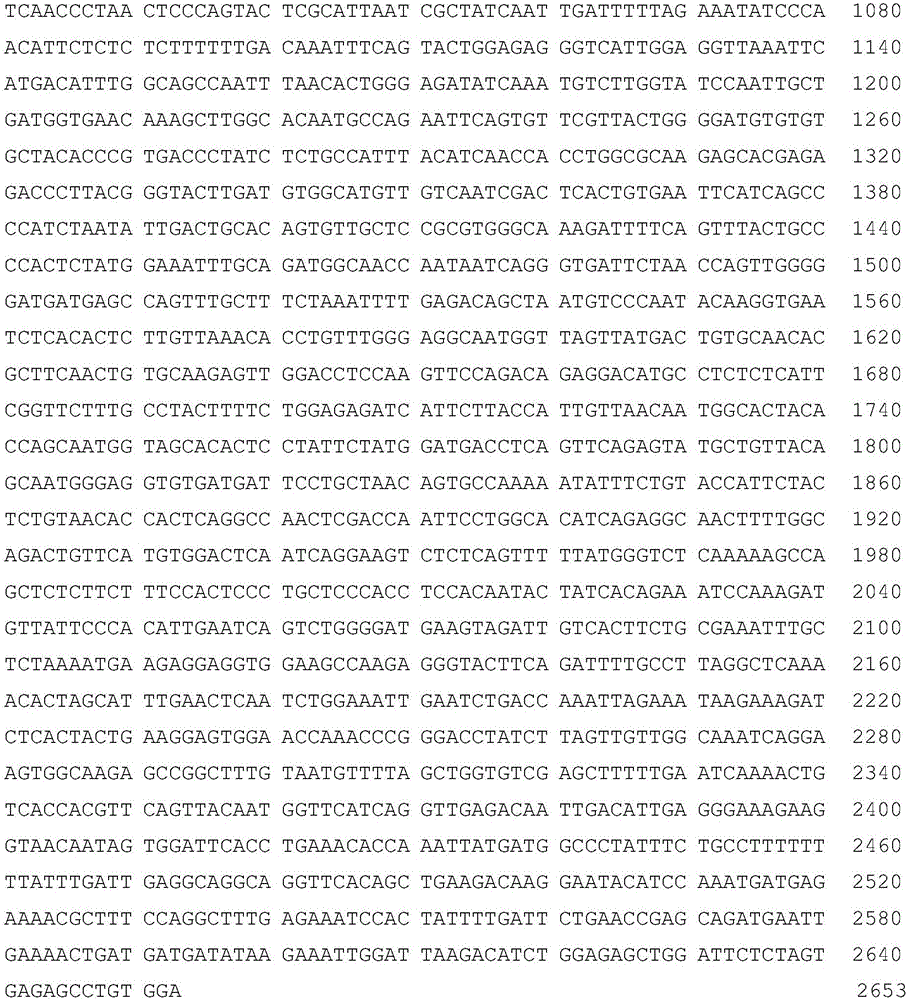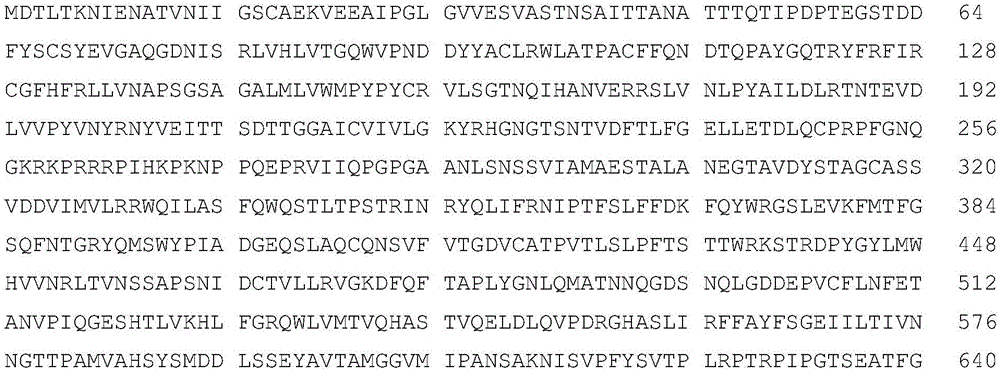Duck hepatitis bivalent live vaccines and preparation method thereof
A live vaccine, duck hepatitis technology, applied in the field of duck hepatitis bivalent live vaccine and its preparation
- Summary
- Abstract
- Description
- Claims
- Application Information
AI Technical Summary
Problems solved by technology
Method used
Image
Examples
Embodiment 1
[0079] - Inspection of poisonous species
[0080] 1 Sterility test and mycoplasma test
[0081]DHV-1QL1 strain virus seeds were tested for sterility and mycoplasma according to the appendix of the current "Chinese Veterinary Pharmacopoeia", and there was no contamination by bacteria, mold and mycoplasma.
[0082] DHV-3QL3 strains were tested for sterility and mycoplasma according to the appendix of the current "Chinese Veterinary Pharmacopoeia", and there was no contamination by bacteria, mold and mycoplasma.
[0083] 2 Exogenous virus inspection
[0084] DHV-1QL1 strain virus seeds are tested for exogenous virus by chicken embryo culture, cell culture and ELISA test (avian leukemia virus detection) according to the appendix of the current "Chinese Veterinary Pharmacopoeia", and there is no exogenous virus contamination.
[0085] The DHV-3QL3 strain virus species was tested for exogenous virus by chicken embryo culture, cell culture and ELISA test (detection of avian leukosi...
Embodiment 2
[0102] ——The virulence recovery test of the poisonous species
[0103] 1 material
[0104] 1.1 Strain type 1 duck hepatitis virus QL1 strain virus seed, virus content is 10 8.38 ELD 50 / 0.1ml; type 3 duck hepatitis virus QL3 strain virus seed, virus content is 10 7.68 ELD 50 / 0.1ml.
[0105] 1. 28-10-day-old SPF chicken embryos were purchased from Jinan Spafas Poultry Co., Ltd.
[0106] 1. The 31-day-old healthy susceptible ducks came from healthy breeding ducks with no history of duck hepatitis and negative DHAV antibodies (neutralizing antibody titer <1:4).
[0107] 2 methods
[0108] 2.1 Virulence recovery test of DHV-1QL1 strain
[0109] 2.1.1 Inoculation of 1-day-old healthy susceptible ducks Inoculate 5 1-day-old healthy susceptible ducks with type 1 duck hepatitis virus QL1 strain virus seed by intramuscular injection, 0.5ml / piece. Observe and record the clinical manifestations of ducklings such as spirit, diet, and feces every day after inoculation, and dissect...
Embodiment 3
[0134] - vaccine preparation
[0135] 1 poison seed breeding
[0136] Take DHV-1QL1 strain virus seeds, dilute 100 times with sterilized normal saline, inoculate 9-10 day-old SPF chicken embryos through the allantoic cavity route, 0.2ml per embryo, incubate at 37°C, discard dead embryos within 24 hours, Aseptically collect the allantoic fluid of chicken embryos that died within 36 to 96 hours, and store it at -20°C. At the same time, do a sterility test and determine the virus content. The measured virus content should be ≥ 10 9.0 ELD 50 / ml. The virus allantoic fluid that has passed the sterility test and the virus content determination is used as the virus species for production.
[0137] Take DHV-3QL3 strain virus seeds, dilute 100 times with sterilized normal saline, inoculate 8-10 day-old SPF chicken embryos through the chorioallantoic membrane route or inoculate 6-7 day-old SPF chicken embryos through the yolk sac route, 0.2ml per embryo , incubated at 37°C, discarde...
PUM
 Login to View More
Login to View More Abstract
Description
Claims
Application Information
 Login to View More
Login to View More - R&D
- Intellectual Property
- Life Sciences
- Materials
- Tech Scout
- Unparalleled Data Quality
- Higher Quality Content
- 60% Fewer Hallucinations
Browse by: Latest US Patents, China's latest patents, Technical Efficacy Thesaurus, Application Domain, Technology Topic, Popular Technical Reports.
© 2025 PatSnap. All rights reserved.Legal|Privacy policy|Modern Slavery Act Transparency Statement|Sitemap|About US| Contact US: help@patsnap.com



